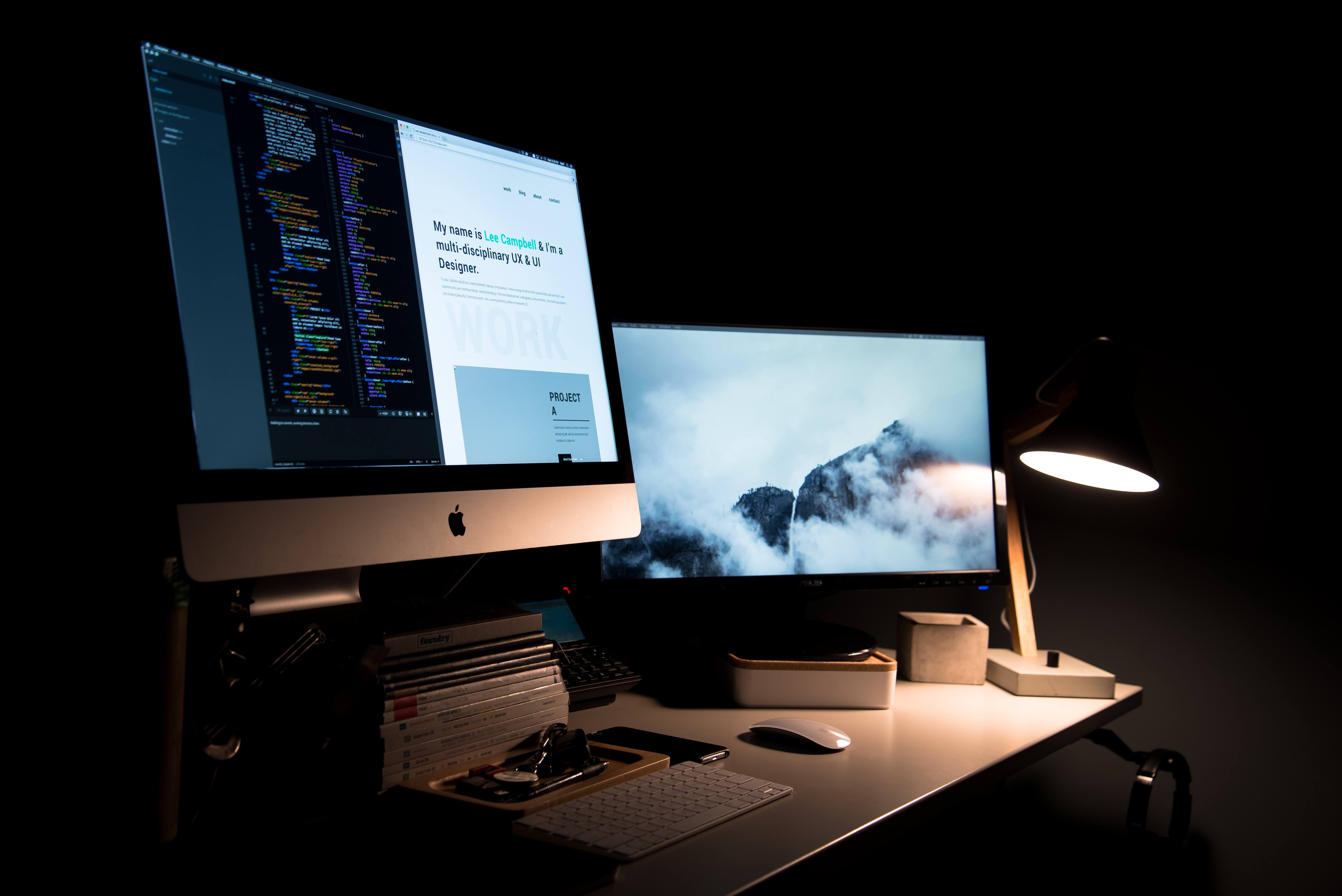All Categories
Featured
Table of Contents
- – Web Development Bachelor's Degree - Full Sail ...
- – Web Design Tutorials By Envato Tuts+ Tips and...
- – Lifted Logic: Web Design In Kansas City - Seo...
- – Web Design Vs. Web Development - Upwork Tips ...
- – Web Design Projects - Behance Tips and Tricks:
- – Beginner's Guide: How To Learn Web Design At ...
- – Design Principles - U.s. Web Design System (...
- – Redtree Web Design - Pittsburgh Tips and Tri...
- – Redtree Web Design - Pittsburgh Tips and Tri...
- – Web Developers And Digital Designers - Burea...
- – 12 Essential Tips For Improving Your Web Des...
Web Development Bachelor's Degree - Full Sail University Tips and Tricks:
Quick summary Functionality and the utility, not the visual style, figure out the success or failure of a website. Because the visitor of the page is the only person who clicks the mouse and therefore decides whatever, user-centric style has developed as a basic technique for effective and profit-oriented website design - web design frederick md.
and the utility, not the visual style, determine the success or failure of a website. Given that the visitor of the page is the only person who clicks the mouse and therefore decides whatever, user-centric design has actually become a basic technique for successful and profit-oriented website design. If users can't use a feature, it might as well not exist.
g. where the search box need to be put) as it has already been done in a variety of articles; rather we focus on the approaches which, utilized appropriately, can result in more sophisticated style decisions and simplify the procedure of perceiving presented details. Please discover that you may be thinking about the usability-related short articles we have actually released before: Principles Of Great Website Design And Reliable Website Design Standards, In order to utilize the principles properly we initially require to comprehend how users interact with sites, how they think and what are the basic patterns of users' behavior.
Web Design Tutorials By Envato Tuts+ Tips and Tricks:
Visitors glance at each new page, scan some of the text, and click on the very first link that catches their interest or slightly resembles the thing they're trying to find. In reality, there are big parts of the page they do not even take a look at. A lot of users browse for something interesting (or helpful) and clickable; as quickly as some appealing candidates are found, users click.
If a page offers users with top quality material, they are prepared to jeopardize the material with ads and the style of the site. This is the reason why not-that-well-designed sites with top quality content get a lot of traffic over years. Material is more essential than the design which supports it.

Users don't check out, they scan. Notification how "hot" locations abrupt in the middle of sentences. This is common for the scanning procedure. Extremely basic principle: If a website isn't able to fulfill users' expectations, then designer failed to get his task done properly and the company loses money. The greater is the cognitive load and the less user-friendly is the navigation, the more willing are users to leave the site and search for options.
Lifted Logic: Web Design In Kansas City - Seo - Website ... Tips and Tricks:
Neither do they scan web page in a direct style, going sequentially from one website area to another one. Instead users satisfice; they select the very first reasonable choice. As quickly as they discover a link that appears like it may result in the objective, there is a very great possibility that it will be right away clicked.
It does not matter to us if we comprehend how things work, as long as we can use them. If your audience is going to imitate you're developing signboard, then design terrific signboards." Users want to be able to control their internet browser and rely on the consistent data discussion throughout the website.
If the navigation and website architecture aren't user-friendly, the number of question marks grows and makes it harder for users to understand how the system works and how to receive from point A to point B. A clear structure, moderate visual ideas and quickly identifiable links can help users to discover their path to their objective.
Web Design Vs. Web Development - Upwork Tips and Tricks:

Given that users tend to explore websites according to the "F"-pattern, these three declarations would be the very first elements users will see on the page once it is packed. The design itself is simple and instinctive, to understand what the page is about the user requires to search for the answer.
As soon as you've attained this, you can interact why the system is helpful and how users can benefit from it. Don't Waste Users' Patience, In every job when you are going to offer your visitors some service or tool, try to keep your user requirements very little.
Novice visitors are willing to, not filling long web forms for an account they may never use in the future. Let users check out the website and discover your services without requiring them into sharing private data. It's not sensible to require users to go into an email address to evaluate the feature.
Web Design Projects - Behance Tips and Tricks:
Stikkit is a perfect example for an user-friendly service which needs practically absolutely nothing from the visitor which is inconspicuous and reassuring. Which's what you want your users to feel on your website. Apparently, Termite requires more. However the registration can be carried out in less than 30 seconds as the form has horizontal orientation, the user does not even require to scroll the page.
A user registration alone is adequate of an obstacle to user navigation to cut down on incoming traffic. Handle To Focus Users' Attention, As sites supply both static and dynamic content, some elements of the user interface attract attention more than others do.
Focusing users' attention to particular locations of the website with a moderate use of visual elements can help your visitors to receive from point A to point B without thinking of how it in fact is expected to be done. The less concern marks visitors have, the they have and the more trust they can establish towards the company the site represents.
Beginner's Guide: How To Learn Web Design At Home - Medium Tips and Tricks:
Make Every Effort For Feature Direct exposure, Modern web styles are typically slammed due to their technique of assisting users with visually appealing 1-2-3-done-steps, big buttons with visual results etc. From the style viewpoint these components actually aren't a bad thing.
The site has 9 main navigation alternatives which are visible at the first look. The option of colors might be too light, though. is an essential principle of successful interface design. It doesn't truly matter how this is accomplished. What matters is that the content is well-understood and visitors feel comfortable with the way they interact with the system.
com gets straight to the point. No adorable words, no overemphasized statements. Rather a price: simply what visitors are looking for. An ideal service for reliable writing is touse brief and concise expressions (come to the point as rapidly as possible), usage scannable design (classify the content, utilize numerous heading levels, use visual elements and bulleted lists which break the flow of consistent text blocks), use plain and objective language (a promo does not need to seem like advertisement; provide your users some reasonable and objective factor why they ought to use your service or remain on your site)6.
Design Principles - U.s. Web Design System (Uswds) Tips and Tricks:
Users are rarely on a website to take pleasure in the style; additionally, for the most part they are trying to find the information despite the design - web design frederick md. Pursue simplicity rather of intricacy. From the visitors' point of view, the very best site design is a pure text, with no advertisements or further material blocks matching exactly the inquiry visitors utilized or the material they have actually been looking for.
Finch clearly presents the info about the site and offers visitors a choice of options without overcrowding them with unnecessary material. Not only does it assist to for the visitors, but it makes it possible to perceive the information presented on the screen.
Complex structures are harder to read, scan, analyze and deal with. If you have the choice between separating two design sectors by a visible line or by some whitespace, it's usually much better to use the whitespace service. (Simon's Law): the better you handle to offer users with a sense of visual hierarchy, the simpler your material will be to perceive.
Redtree Web Design - Pittsburgh Tips and Tricks:
The same conventions and rules should be applied to all elements.: do the most with the least quantity of hints and visual aspects. Clarity: all elements need to be created so their significance is not ambiguous.
Conventions Are Our Good friends, Traditional style of site aspects does not lead to a dull web website. In fact, as they lower the finding out curve, the need to find out how things work. It would be an use nightmare if all sites had various visual discussion of RSS-feeds. That's not that various from our routine life where we tend to get utilized to fundamental principles of how we arrange data (folders) or do shopping (positioning of items).
comprehend what they're getting out of a site navigation, text structure, search placement etc. A common example from usability sessions is to translate the page in Japanese (assuming your web users do not know Japanese, e. g. with Babelfish) and provide your usability testers with a job to find something in the page of different language.
Redtree Web Design - Pittsburgh Tips and Tricks:
Test Early, Test Frequently, This so-called TETO-principle ought to be applied to every web design job as functionality tests often supply into substantial issues and issues related to a provided layout. Test not too late, not too little and not for the wrong reasons.
Some crucial indicate remember: according to Steve Krug, and testing one user early in the project is much better than testing 50 near the end. Accoring to Boehm's very first law, errors are most frequent during requirements and style activities and are the more pricey the later on they are gotten rid of.
That indicates that you design something, test it, fix it and after that test it once again. There may be problems which haven't been discovered throughout the preliminary as users were virtually obstructed by other problems. functionality tests. Either you'll be indicated the problems you have or you'll be indicated the absence of significant style defects which remains in both cases an useful insight for your job.
Web Developers And Digital Designers - Bureau Of Labor ... Tips and Tricks:

This holds for designers. After you have actually worked on a website for couple of weeks, you can't observe it from a fresh point of view anymore. You understand how it is built and therefore you understand precisely how it works you have the wisdom independent testers and visitors of your website would not have.
It can be connected to other locations such as graphic style, user experience, and multimedia arts, however is more aptly seen from a technological perspective. It has ended up being a big part of people's daily lives. It is hard to think of the Web without animated graphics, various designs of typography, background, videos and music.
Throughout 1991 to 1993 the Internet was born. Text-only pages might be viewed using a simple line-mode web browser. In 1993 Marc Andreessen and Eric Bina, developed the Mosaic browser. At the time there were numerous browsers, however the bulk of them were Unix-based and naturally text heavy. There had actually been no integrated method to graphic design elements such as images or noises.
12 Essential Tips For Improving Your Web Design In 2022 Tips and Tricks:
The W3C was developed in October 1994 to "lead the Web to its complete potential by developing typical procedures that promote its evolution and guarantee its interoperability." This dissuaded any one company from monopolizing a propriety browser and shows language, which might have altered the result of the Web as a whole.
As this has actually taken place the technology of the web has likewise moved on. There have actually likewise been significant changes in the way individuals utilize and access the web, and this has actually altered how websites are created.
Learn more about Lovell Media Group LLC or TrainACETable of Contents
- – Web Development Bachelor's Degree - Full Sail ...
- – Web Design Tutorials By Envato Tuts+ Tips and...
- – Lifted Logic: Web Design In Kansas City - Seo...
- – Web Design Vs. Web Development - Upwork Tips ...
- – Web Design Projects - Behance Tips and Tricks:
- – Beginner's Guide: How To Learn Web Design At ...
- – Design Principles - U.s. Web Design System (...
- – Redtree Web Design - Pittsburgh Tips and Tri...
- – Redtree Web Design - Pittsburgh Tips and Tri...
- – Web Developers And Digital Designers - Burea...
- – 12 Essential Tips For Improving Your Web Des...
Latest Posts
Figma: The Collaborative Interface Design Tool. Tips and Tricks:
Website Design - Best Ecommerce Web Design By Shopify Tips and Tricks:
What Is A Web Designer? (2022 Guide) - Brainstation® Tips and Tricks:
More
Latest Posts
Figma: The Collaborative Interface Design Tool. Tips and Tricks:
Website Design - Best Ecommerce Web Design By Shopify Tips and Tricks:
What Is A Web Designer? (2022 Guide) - Brainstation® Tips and Tricks: